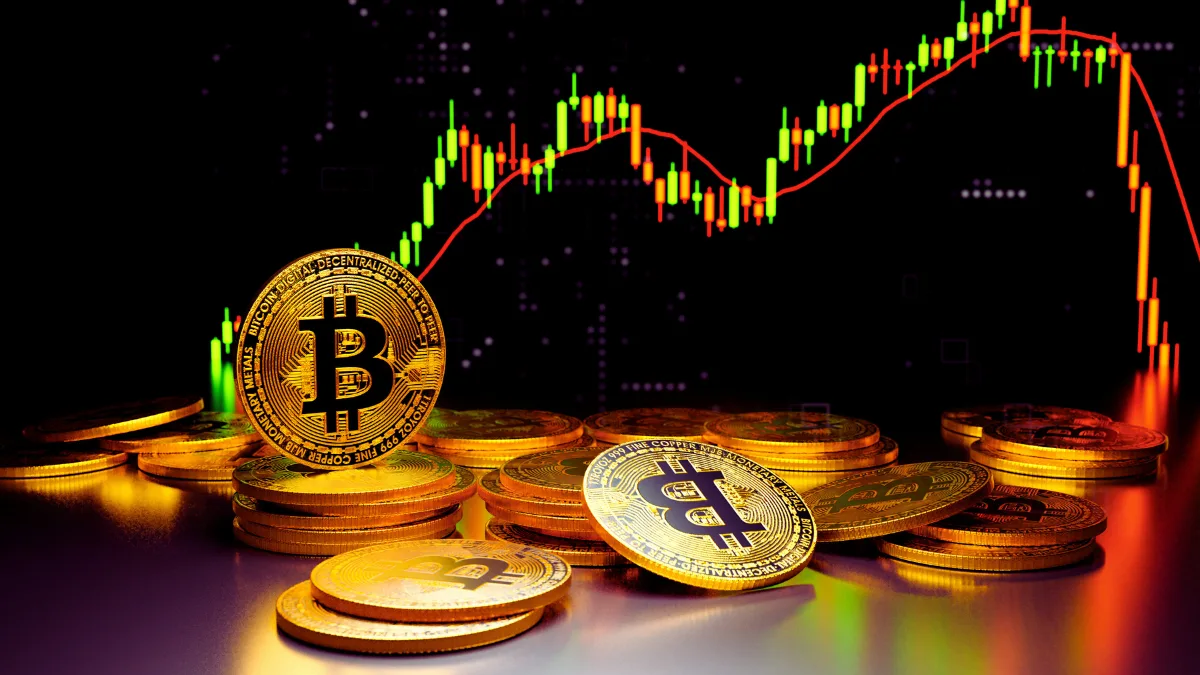November 2022 nearly destroyed my retirement dreams.
I watched my crypto portfolio drop from $250,000 to $70,000 in three weeks. I couldn’t sleep. My stomach hurt every time I checked prices. Bitcoin crashed from $68,000 to $16,000. Ethereum fell from $4,800 to $1,200.
Everyone told me to sell everything and forget crypto existed.
I did the opposite. And by November 2024, I turned that $70,000 into $250,000 again. This is exactly how I did it.
What Went Wrong: The 2022 Disaster

You need to understand what happened before you can fix it.
The crypto market lost over $1 trillion in 2022. Three major disasters hit at once:
First, Terra Luna collapsed in May 2022. People lost billions overnight. This coin was supposed to be “safe” and “stable.” It wasn’t.
Second, a company called Three Arrows Capital went bankrupt. They borrowed too much money and couldn’t pay it back.
Third, FTX crashed in November. The CEO was stealing customer money. People who kept crypto on that exchange lost everything.
I made three huge mistakes:
I kept too much money on exchanges instead of my own wallet. I owned too many risky coins instead of just Bitcoin and Ethereum. I panicked and sold some coins at the worst possible time.
But here’s what saved me. I didn’t sell everything. I kept my Bitcoin and Ethereum even when they were down 75%.
The One Strategy That Saved My Retirement

Dollar cost averaging changed everything for me.
Here’s what it means in simple terms. You buy the same dollar amount every week or month. You don’t try to guess if prices will go up or down. You just buy on schedule.
Think about buying groceries. You don’t buy food for the whole year at once. You buy a little each week. Sometimes milk costs more. Sometimes it costs less. Over time, it averages out.
I started in March 2023 with $2,000 per month. Every month. No matter what.
When Bitcoin was $20,000, I bought. When it hit $30,000, I bought. When it dropped back to $25,000, I bought again.
A study by River Financial analyzed Bitcoin purchases from 2015 to 2023. They found that investors who bought $100 of Bitcoin every week had an average return of 178%. Investors who tried to time the market and buy at “perfect” moments only returned 96% on average. The consistent buyers made almost twice as much money.
Here’s my exact breakdown:
60% went to Bitcoin every month. 30% went to Ethereum. 10% I saved for big dips or opportunities.
I set up automatic buys on Coinbase. The money left my bank account before I could second-guess it. This removed all emotion from my choices.
From March 2023 to December 2024, I invested $42,000 total. Those coins are now worth about $94,000. That’s $52,000 in gains just from consistent buying.
My average Bitcoin price was $28,500. Bitcoin is now over $100,000. That’s a 3.5x return.
How I Split My Money: The 60/30/10 Rule

My biggest 2022 mistake was owning too many random coins.
I had 15 different cryptocurrencies. Most of them went to zero or close to it. When everything crashed, my small coins crashed hardest.
After the winter, I made a new rule. Only own coins that big institutions own.
Here’s my split:
60% Bitcoin. This is the safest crypto. It’s been around the longest. Major companies now own it. The US government approved Bitcoin ETFs in January 2024. That brought in billions of dollars from retirement accounts and big investors.
30% Ethereum. This is the second biggest crypto. It powers most of the apps and smart contracts in crypto. It’s also available as an ETF now.
10% for opportunities. I keep some cash in stablecoins. When there’s a big dip, I can buy quickly. I also own small amounts of Solana and Avalanche, but never more than 5% each.
Financial experts say crypto should be 1% to 5% of your total investments. Some say up to 10% if you’re younger and can handle risk. I keep mine at 8% now.
I check my allocation every three months. If Bitcoin grows to 70% of my crypto, I will sell some and buy more Ethereum. This keeps my plan balanced.
I never chase new coins anymore. No meme coins. No celebrity coins. No “next Bitcoin” promises. Just the two main coins that aren’t going anywhere.
The Tax Trick That Saved Me $15,000

This is the part most people miss. You can turn losses into money.
When you sell crypto at a loss, you can use that loss to pay less in taxes. It’s called tax loss harvesting. And it’s completely legal.
Here’s what I did in December 2022:
I had crypto worth $70,000 that I originally bought for $145,000. That’s a $75,000 loss on paper. I sold everything and bought it back the same day.
Why? Because crypto doesn’t have the “wash sale rule” that stocks have. With stocks, you have to wait 30 days to buy back. With crypto, you can sell and rebuy instantly.
That $75,000 loss did three things for me:
I offset $40,000 in gains from my stock portfolio. I didn’t have to pay taxes on those stock gains. I deducted $3,000 from my regular income that year. This lowered my tax bill. I carried forward $32,000 in losses to use in 2023 and 2024.
Total tax savings over three years: about $15,000.
You can only deduct $3,000 per year against regular income. But you can offset unlimited capital gains. And unused losses roll forward to future years.
I used Koinly to track everything. It’s tax software for crypto. It connects to your exchange accounts and calculates all your gains and losses automatically. Worth every penny.
Here’s the important part for 2025: Crypto exchanges now report to the IRS. Starting January 2025, they will send you a Form 1099-DA. This makes it easier to file taxes, but also harder to “forget” to report crypto.
Do your tax loss harvesting before December 31st each year. That’s the deadline for it to count for that tax year.
Why Bitcoin ETFs Changed Everything

January 10, 2024, was a huge day for crypto.
The US government approved 11 Bitcoin ETFs all at once. An ETF is like a stock that tracks Bitcoin’s price. You can buy it in regular investment accounts.
BlackRock’s Bitcoin ETF (ticker: IBIT) brought in $37 billion in the first year. That’s the third-highest inflows of any ETF ever. Fidelity’s Bitcoin ETF has over $21 billion.
This matters for your retirement in two ways:
First, you can now own Bitcoin in your IRA or 401k. The gains grow tax-free if it’s a Roth IRA. You don’t have to worry about wallets or passwords or getting hacked.
Second, big institutions are now buying. When BlackRock and Fidelity own Bitcoin, it becomes more legitimate. More stable. Less likely to completely disappear.
I keep 40% of my crypto in a Roth IRA now through a Bitcoin ETF. The other 60% I own directly and keep in my own wallet.
Here’s why I split it this way:
ETF advantages: No security worries. Easy to buy and sell. Works in retirement accounts. My mom can understand it.
Direct ownership advantages: I actually own the Bitcoin. I can spend it or send it if I want. Lower fees. No middleman.
The ETF I use is BlackRock’s IBIT. It charges 0.25% per year. That’s $25 per year for every $10,000 invested. Way cheaper than Grayscale’s GBTC, which charges 1.5%.
If you’re over 50, you can put $8,000 per year into an IRA. Under 50, it’s $7,000. I max this out every year now and put it into Bitcoin and Ethereum ETFs.
In a Roth IRA, you pay taxes now but never again. If Bitcoin goes from $100,000 to $500,000 over 20 years, you pay zero taxes on that $400,000 gain. That’s huge.
The Rules That Protect Me Now

I made new rules after losing $180,000. I don’t break them. Ever.
Rule 1: Never keep more than trading amounts on exchanges. FTX taught me this. I move most of my crypto to a hardware wallet within 24 hours of buying it. I use a Ledger Nano X. It’s like a USB drive that stores your crypto offline.
Rule 2: Crypto is 10% of my total investments maximum. I have stocks, bonds, real estate, and cash, too. If crypto goes to zero tomorrow, I’m still okay. Annoyed, but okay.
Rule 3: No leverage. Ever. Leverage means borrowing money to buy more crypto. It makes gains bigger but losses catastrophic. Many people lost everything in 2022 because of leverage. I only buy what I can afford with cash.
Rule 4: I have six months of expenses in cash. Before I invest a single dollar in crypto, I make sure my emergency fund is full. This stops me from panic-selling when I need money suddenly.
Rule 5: I stick to my plan even when everyone’s making money on random coins. In 2024, meme coins went crazy again. People made fast money. I didn’t touch them. I remembered 2022.
Rule 6: I take some profits. When Bitcoin hit $100,000, I sold 5% of my holdings. I moved that money to index funds. This locks in gains and reduces my risk.
The hardest part of investing is controlling your emotions. You see prices go up, and you want to buy more. You see prices crash, and you want to sell everything.
Automatic monthly buys fix this. You remove emotion from the equation. You follow the plan even when your brain screams at you to do something different.
What’s Different Now Compared to 2022

Bitcoin crossed $100,000 in December 2024. Some experts predict it could hit $150,000 to $200,000 by the end of 2025.
But I don’t invest based on predictions. I invest based on what’s different structurally.
Here’s what changed:
Bitcoin halving happened in April 2024. Every four years, the amount of new Bitcoin created gets cut in half. This makes it more scarce. Every halving in history has led to price increases 12-18 months later.
Major institutions now own Bitcoin. 67% of institutional investment firms plan to increase their crypto holdings in 2025. These are pension funds, endowments, and family offices with billions of dollars.
Better regulation is coming. The US has clearer rules now. Europe passed comprehensive crypto laws. This reduces the chance of another FTX-style disaster.
The technology got better. Ethereum uses 99% less energy now. Layer 2 solutions make transactions faster and cheaper. The actual utility of crypto has improved.
But here are the risks I’m watching:
Another crypto winter could start in late 2026 or early 2027. Markets move in cycles. The next crash will come eventually.
Governments could crack down harder. If crypto gets used for too much illegal activity, regulators might get aggressive.
A recession could tank everything. If the economy crashes, people sell risky assets first. That includes crypto.
I’m not trying to time these risks. I’m just aware they exist. I keep my allocation reasonable and stick to my monthly buying plan.
What You Should Do Right Now

You don’t need to invest $2,000 per month like I did. Start with whatever you can afford to lose completely.
Here’s my advice for getting started:
Start with $100 or $200 per month. Pick an amount that won’t stress you out. Set up automatic purchases on Coinbase or Kraken.
Buy 70% Bitcoin and 30% Ethereum. Skip everything else until you have at least $10,000 invested. Don’t get distracted by small coins.
Track everything for taxes. Use Koinly or CoinTracker from day one. Connect your exchange accounts. It will save you hours during tax season.
Open a Roth IRA if you don’t have one. Put your IRA contribution into a Bitcoin or Ethereum ETF. You can do this at Fidelity or on a platform like iTrustCapital.
Move coins to your own wallet once you have $1,000 or more. Get a Ledger or Trezor hardware wallet. Follow the setup instructions carefully. Write down your seed phrase and store it somewhere safe.
Plan for at least five years. If you might need this money in the next two years, don’t put it in crypto. The volatility is too high.
Ignore the daily price. Delete the price-checking apps from your phone. Check once per month when you make your purchase. That’s it.
My portfolio went from $70,000 to over $250,000 in 24 months. But that doesn’t mean yours will do the same. I started buying at historically low prices after a major crash.
The strategy works because it’s boring. It’s consistent. It removes emotion. And it gives you more chances to buy low than if you tried to time the market perfectly.
The Real Lesson From My Comeback

I didn’t get lucky. I got disciplined.
The $180,000 I lost taught me more than any gain ever could. It taught me that hype doesn’t matter. Marketing doesn’t matter. Only fundamentals matter.
Bitcoin and Ethereum survived when everything else died. They had the most developers, the most users, and the most real-world use. That’s why I only own them now.
Dollar cost averaging is boring. But boring wins in investing. The people who made the most money in crypto weren’t the traders. They were the people who bought consistently and held through the crashes.
Tax loss harvesting turned my biggest loss into a long-term advantage. I saved $15,000 in taxes that I reinvested. That money is now worth over $30,000.
And Bitcoin ETFs gave me a way to invest retirement money that I couldn’t touch before. My Roth IRA crypto allocation has grown tax-free and will stay that way forever.
You don’t need to risk everything. You don’t need to buy at the perfect time. You just need a plan and the discipline to stick to it when it gets hard.
Start small. Start today. Set up automatic monthly purchases and forget about them for a year.
The next crypto winter will come eventually. But if you’re buying consistently, you’ll be ready to load up when everyone else is panicking.
That’s how you turn winter into spring.
